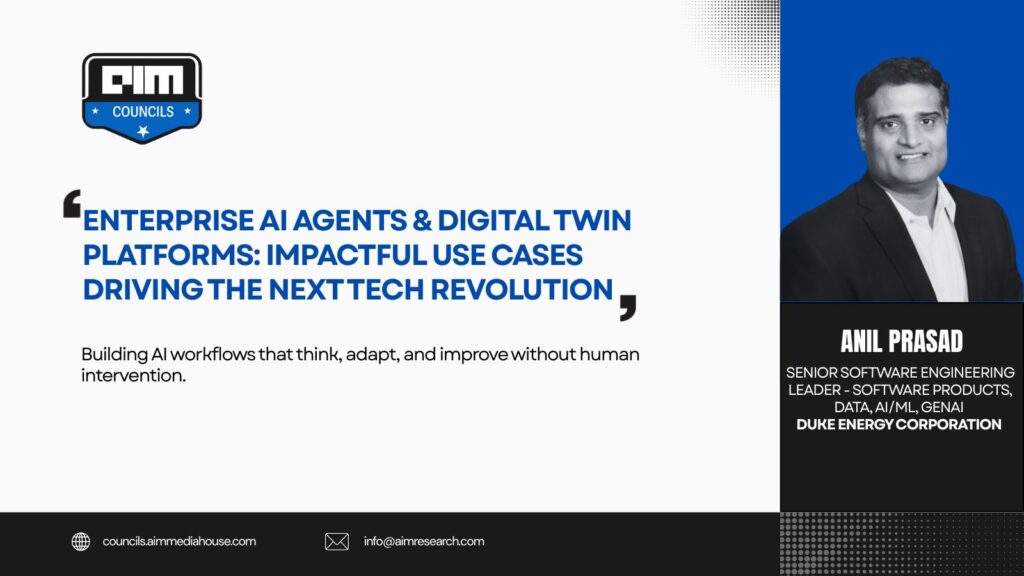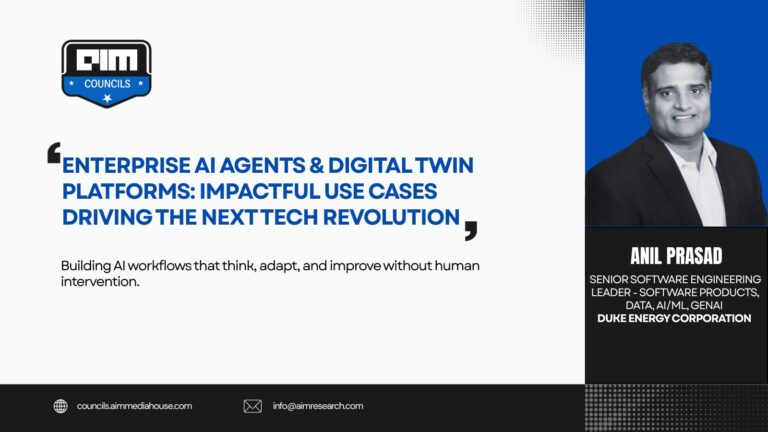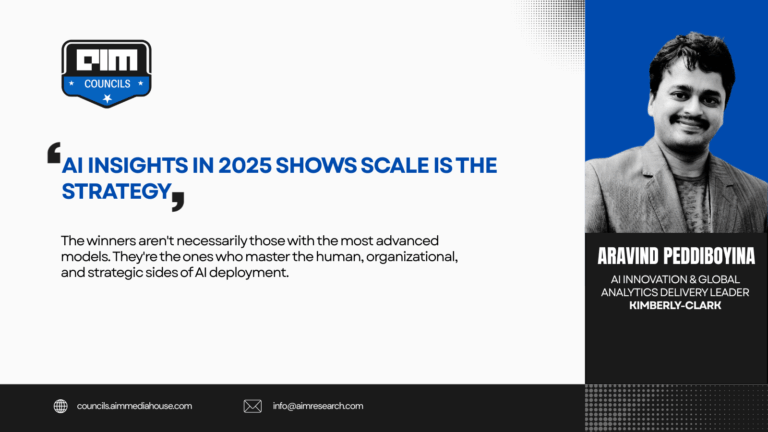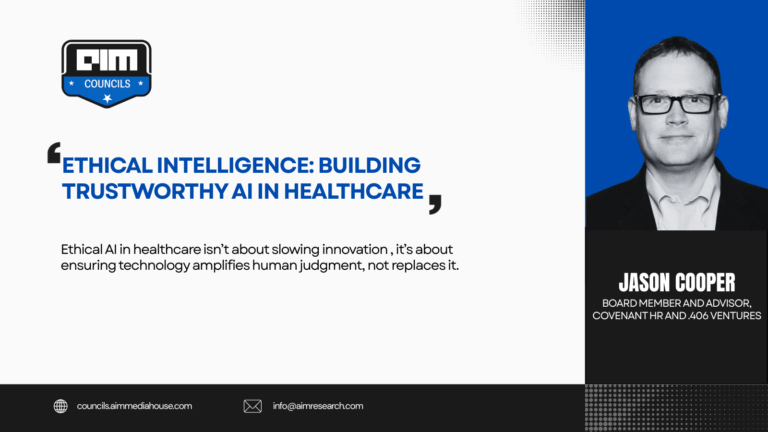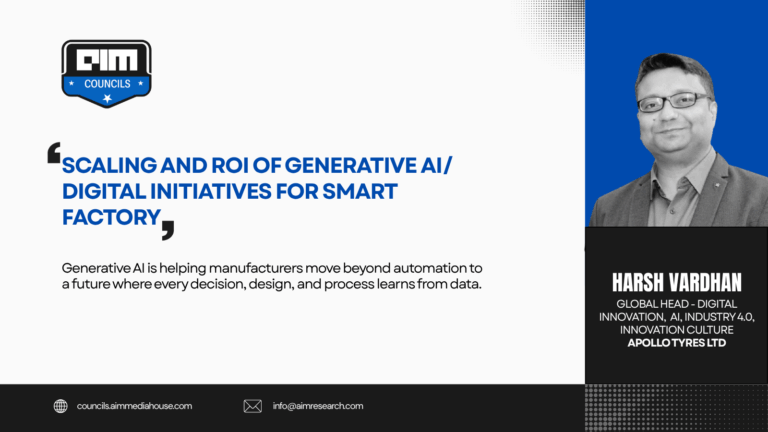Tech companies are competing to operationalise advanced AI, yet translating innovation into scalable, real‑world value continues to test even the most mature organisations. As AI evolves from consumer chatbots to enterprise-grade co-pilots, leading firms like Meta, Google, NVIDIA, Amazon, Apple, Netflix, OpenAI, and Perplexity are redefining the art of building AI-first organizations. Their collective challenge lies in embedding large language models, autonomous agents, and real‑time digital twin platforms into complex enterprise environments without disrupting existing systems and processes. It’s not only a tech upgrade; it’s a new way for companies to handle intelligence, automation, and large-scale decisions.
This article explores two field‑proven applications shaping that transformation: Enterprise AI Agents, which assume process ownership and drive intelligent automation across functions; and Digital Twin Platforms, which enable real‑time operational simulation and scenario planning. Together, these innovations demonstrate how forward‑thinking organisations are leveraging AI to elevate decision intelligence, streamline workflows, and unlock measurable business value across the enterprise.
Adaptive AI agents reshape enterprise operations.
Enterprise AI Agents independently manage tasks across CRM, ERP, and custom business systems by making real-time decisions that enhance operational efficiency and dramatically reduce manual workload. Companies like Meta and Google apply these agents for incident response and IT service management, while Amazon uses them to refine supply chain processes. GPTBots.ai helps automate workflows and make smart decisions on its own. It uses advanced analytics, language understanding, and learning abilities, and connects easily with tools like CRM and ERP systems. It’s scalable, easy to use, and best suited for large companies looking for intelligent automation.
These AI agents connect deeply with cloud APIs, databases, retrieval-augmented generation (RAG) frameworks, and operate continuous monitoring systems. Their modular, API-native design allows them to continuously learn and adapt by combining large language model reasoning (such as LangChain and GPT-3.5) with strict business rules, ensuring high trust and full explainability. When scaled, these systems accelerate operational cycles, minimize errors, boost compliance, and enhance developer productivity.This is illustrated by my use case of autonomous development of AI agents for healthcare claims processing and fintech onboarding, built on a RAG-based multi-tenant SaaS platform integrating FastAPI, Postgres, LangChain, and AWS Lambda. This deployment achieved a fourfold increase in onboarding speed and reduced incidents by 40%, demonstrating the substantial value autonomous AI agents bring by seamlessly orchestrating complex workflows and delivering measurable performance gains. This evolution highlights how enterprise AI agents are transitioning from supportive tools to autonomous collaborators central to AI-first businesses.
Predictive power meets AI Digital twins
Machine learning and AI-powered digital twin platforms are redefining how businesses optimize and simulate essential processes in real time. Technologies like NVIDIA Omniverse, Meta Reality Labs, and Amazon’s internal logistics twins exemplify the power of 3D virtualizations combined with time-series analytics to model complex systems such as production lines, supply chains, energy grids, and healthcare workflows. GE Digital’s AI tools predict maintenance needs in advance, helping plants avoid costly breakdowns and save energy while reducing downtime by up to 50%.
Enterprises stream live data into these digital twins through platforms such as AWS S3, Airflow pipelines, and Databricks, enabling sophisticated “what-if” scenario planning, predictive maintenance, and risk assessment. This capability transforms traditional reactive operations into proactive, resilient ecosystems capable of reducing downtime, improving efficiency, and supporting smarter, data-driven planning. The synergy between digital twin technology and enterprise large language models accelerates the feedback loop, enhancing simulation accuracy and decision-making speed.
In a recent project, I constructed a clinical workflow digital twin using technologies like spaCy and NLTK for natural language processing, Azure Data Factory for data integration, and Power BI for visualization and reporting. This system streamlines note summarization and documentation for digital health providers, cutting manual effort by 60% while improving care quality. By virtualizing healthcare workflows and automating data summarization, this digital twin provides clinicians with clearer, timely insights, reducing administrative burdens and enabling more focused patient care. Such implementations demonstrate how the convergence of AI-driven digital twins with real-time data integration is transforming industries, turning complex operations into dynamic, optimizable digital ecosystems that directly boost operational outcomes and organizational agility.

As AI changes the way tech leaders operate, Enterprise AI Agents and Digital Twins are demonstrating real value. These technologies demonstrate scalability and readiness to meet complex business needs, moving beyond experimental stages into mission-critical roles. For leaders, success hinges on prioritizing robust, modular architectures that seamlessly blend cloud APIs with advanced large language model frameworks, ensuring smooth integration with existing enterprise systems. Equally important is investing in explainable AI and continuous monitoring to maintain trust, transparency, and governance throughout AI deployments. By embracing these principles, organizations can unlock exponential business value while fostering a culture of innovation that emphasizes collaboration and ethical AI use. This forward-looking approach positions enterprises not just to respond to change, but to shape it proactively, delivering smarter operations, enhanced decision-making, and sustained competitive advantage in a rapidly evolving digital landscape.

